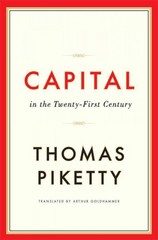Question
Complete the following two questions. 1. Supply and Demand Schedules for Wilson Footballs Supply Schedule Demand Schedule Price Quantity Supplied Price Quantity Demanded $12.00 20000
Complete the following two questions.
1. Supply and Demand Schedules for Wilson Footballs
Supply Schedule Demand Schedule Price Quantity Supplied Price Quantity Demanded $12.00 20000 $12.00 50000 $15.00 40000 $15.00 40000 $18.00 60000 $18.00 30000 $21.00 80000 $21.00 20000 $24.00 100000 $24.00 10000
a. Graphically represent the supply and demand schedules in a supply curve and demand curve, respectively, on the same graph. Do not put the two curves on separate graphs. b. What are the equilibrium price and quantity in this example? (8 points) c. At each price from the schedules above, determine whether there exists a shortage or surplus of the footballs in the market and state the size of this shortage or surplus at each price. d. If the price of leather, an input or resource used in the production of the footballs, were to decrease, show how this would impact your graph for the footballs. In other words, show if the supply curve or the demand curve shifts, based upon the determinants of demand and determinants of supply from the book and the notes (both curves will not shift) and show the direction in which the curve will shift. Label what you did as L and explain what has occurred on the graph to the equilibrium price and quantity and explain why you shifted the curve you did. e. Suppose the price of Nike footballs (a substitute good) was to increase. Show what impact this higher priced substitute good will have on your graph for the footballs. In other words, show if the supply curve or the demand curve shifts, based upon the determinants of demand and determinants of supply from the book and the notes (both curves will not shift) and show the direction in which the curve will shift. Label what you did as N and explain what has occurred on the graph to the equilibrium price and quantity and explain why you shifted the curve you did. f. Returning to the schedules at the start of the question, suppose the government intervened and stated that the price for the footballs was to be set at $12.00, would they be setting a price ceiling OR a price floor, so as to impact the market as per the definition of what a price control is intended to do? Explain. g. What quantity of footballs would be sold at the price of $12.00, based upon the schedules that you graphed in part a? .
2. Supply and Demand Curve Shifts (this question is not related to question 1 from the previous page) Drawing graphs to see the shifts in supply and demand will be beneficial, but to receive credit, you must indicate what has happened to the equilibrium price (increase, decrease or indeterminate) and quantity (increase, decrease or indeterminate) as a result of these two curves shifting at the same time in the direction stated in each of the parts below.
a. Suppose that both the supply and demand curve for a given product increase simultaneously. As a result of both changes occurring at the same time, explain in words what impact these two changes together will have on the equilibrium price and the equilibrium quantity for the given product. b. This part is independent from part a. Suppose that the supply curve for a given product increases while at the same time the demand curve for that same product decreases. As a result of both changes occurring at the same time, explain in words what impact these two changes together will have on the equilibrium price and the equilibrium quantity for the given product.
Step by Step Solution
There are 3 Steps involved in it
Step: 1

Get Instant Access to Expert-Tailored Solutions
See step-by-step solutions with expert insights and AI powered tools for academic success
Step: 2

Step: 3

Ace Your Homework with AI
Get the answers you need in no time with our AI-driven, step-by-step assistance
Get Started


